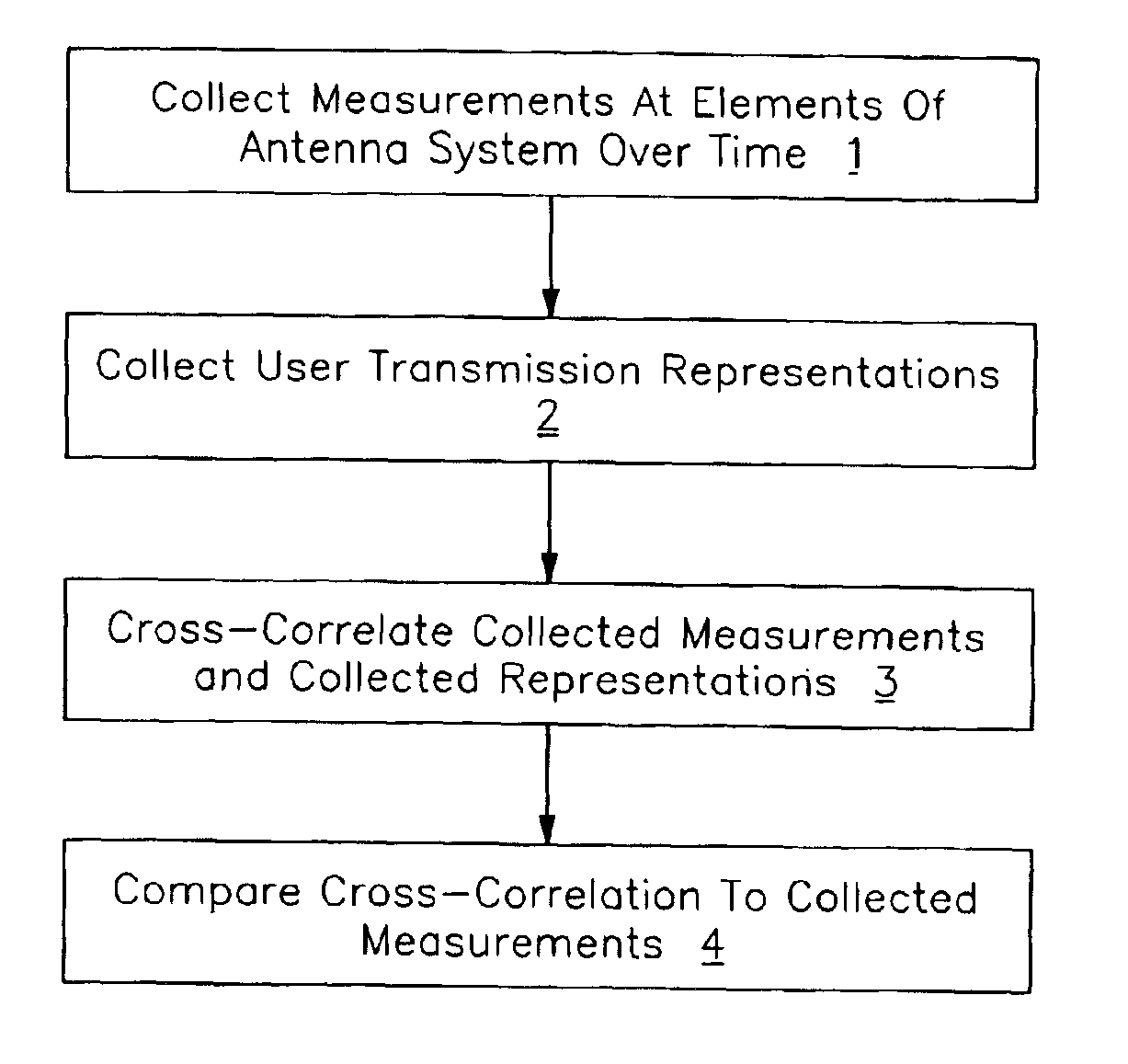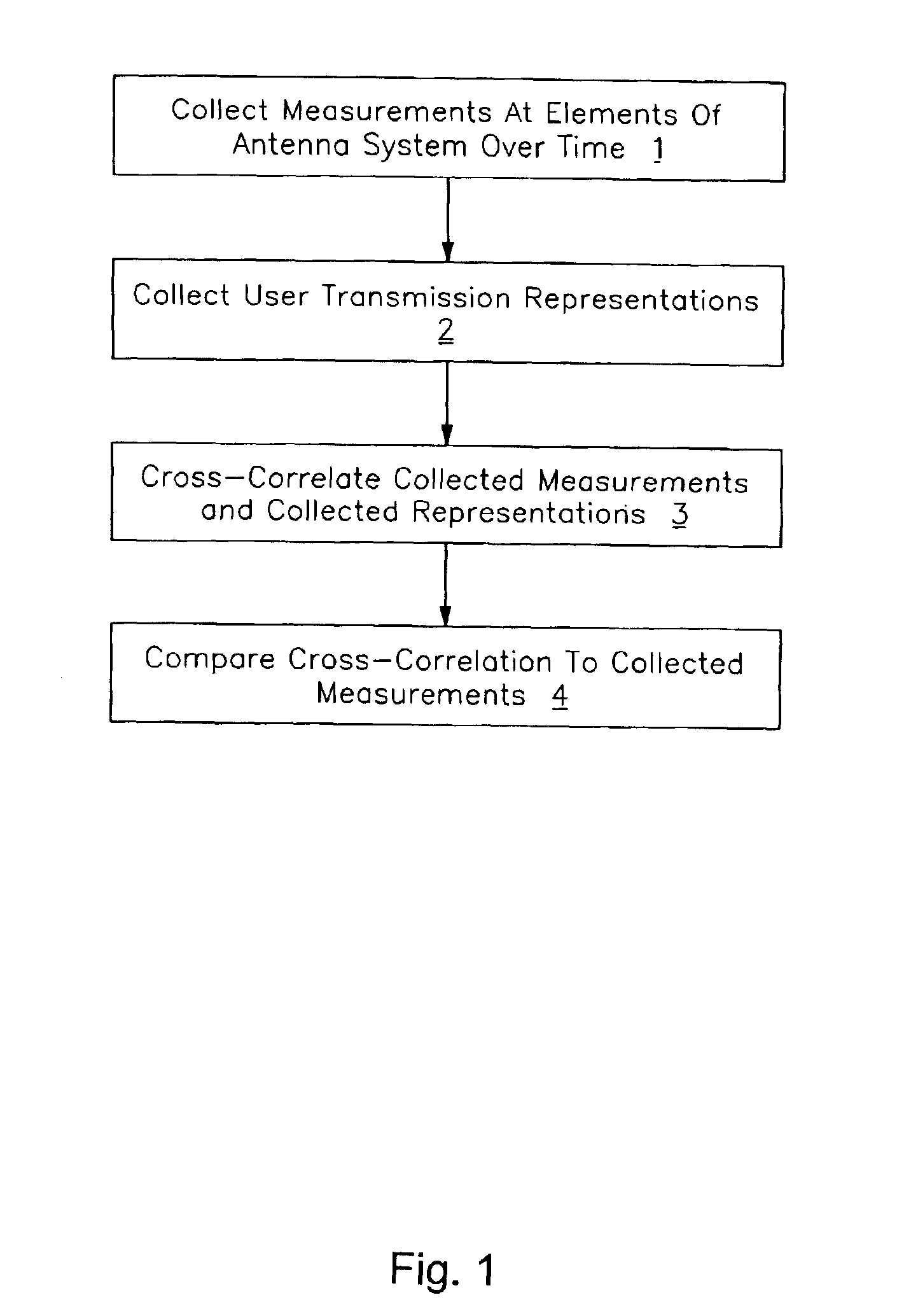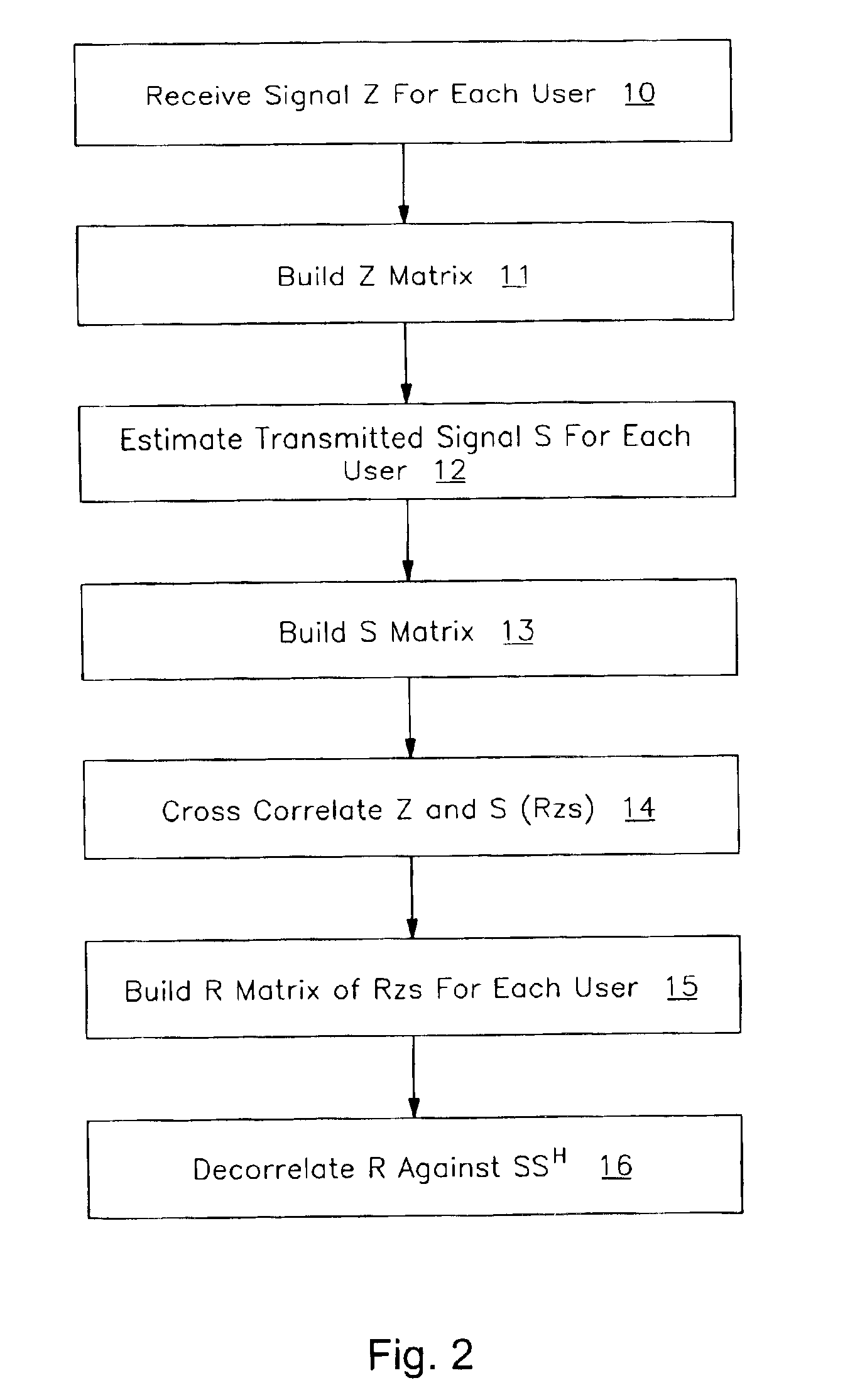Hard decision-based decorrelator for estimating spatial signatures in a wireless communications system
a wireless communication system and decorrelator technology, applied in the field of wireless communication systems, can solve the problems of not being able to distinguish the low power user at all, and not being able to distinguish the two
- Summary
- Abstract
- Description
- Claims
- Application Information
AI Technical Summary
Problems solved by technology
Method used
Image
Examples
Embodiment Construction
[0017]Overview
[0018]An unbiased spatial signature can be estimated by isolating the contribution of the user of interest from all of the other users. This can be done by collecting an estimate of the spatial signature for each user into columns of a matrix R, generated, for example, by cross-correlating the composite received signal with each user's corresponding estimated transmitted signal, and decorrelating with a matrix consisting of information from all of the users represented in the matrix R. As explained below, this can be expressed, in one example using hard symbol decisions, as Â=R(SSH)−1 or using soft symbol decisions as Â=(RzzR)(RRH)−1.
[0019]Adaptive Smart Antenna Processing
[0020]Embodiments of the invention relate to estimating spatial signatures used by a communications station to characterize communicating terminals. In some embodiments, the communications station is a base station communicating with many user terminals or remote terminals The spatial signatures can b...
PUM
 Login to View More
Login to View More Abstract
Description
Claims
Application Information
 Login to View More
Login to View More - R&D
- Intellectual Property
- Life Sciences
- Materials
- Tech Scout
- Unparalleled Data Quality
- Higher Quality Content
- 60% Fewer Hallucinations
Browse by: Latest US Patents, China's latest patents, Technical Efficacy Thesaurus, Application Domain, Technology Topic, Popular Technical Reports.
© 2025 PatSnap. All rights reserved.Legal|Privacy policy|Modern Slavery Act Transparency Statement|Sitemap|About US| Contact US: help@patsnap.com



